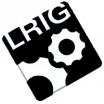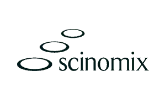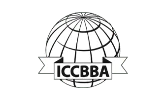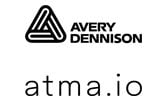One of the most critical aspects of ensuring a barcode strategy that’s effective in keeping your business flowing smoothly is your print technology. While it may seem like a matter of preference in many applications, our customers tend to work in harsh environments where barcodes need to last through exposures to extreme temperatures, chemicals, abrasion and more. In situations like these, the right technology can ensure properly printed labels, which in turn lead to increased efficiencies, security and returns within your business. In this post we’re going to break down three of the most commonly used label printing technologies that you can implement in-house—thermal transfer, inkjet and laser—so you can make sure you invest in the best label printing technology for your needs.
Thermal Transfer:
By far one of the most popular on-demand label printing technologies, and one we recommend often, thermal transfer offers a number of benefits that make it ideal for printing barcodes for lab use. Three that stand out are durability, scannability and cost.
Images are transferred from a wax or resin ribbon onto the media as the printhead heats and cools, creating a durable bond between your marking and your label. With the right ribbon and label combination, thermal transfer printed labels can handle exposures to extreme cold, high temperatures, abrasion, chemicals and more with no problem.
The key to successful thermal transfer label printing is to work with a supplier who is familiar with your industry and specific exposure needs to curate a suitable ribbon, label, and printer combination for your application.
Not only does the thermal transfer printing process create a durable image, but it also creates crisp and clear lines and edges. Clean, consistent and high contrast markings are the most important features of a highly scannable barcode (especially the small barcodes often needed for labware labeling) so it’s no wonder thermal transfer is such a commonly used and recommended barcode printing technology in the healthcare space.
If you’ve owned or looked into purchasing a thermal transfer label printer, you might have noticed they tend to be reasonably priced in comparison to other technologies. Not only is the equipment itself typically cost efficient, but so are the consumables making this type of solution justifiable in most applications.
Many thermal transfer label printers are available with an array of optional features or customization options allowing them to adapt to different environments and applications. A good example of this (and one of our personal favorites) is the cab SQUIX, which can be modified to include RFID encoding, up to 600 dpi print resolution, and various dispense and even application options. Both cab’s Axon 2 automated applicator for tubes and vials and the S3200 plate labelers are built using the SQUIX as a base for a familiar and trustworthy experience. Additional features to any printer will increase the cost, but bring value to specific processes.
While all of these features make thermal transfer a great fit for barcoding, it’s not suitable for every application. The main reason some steer away from thermal transfer is it’s limited capacity for color printing. Some models, such as the cab XC6, can incorporate a second accent color making them great for applications like GHS labeling, however most can only print a single color at a time.
Overall, thermal transfer is a barcode & labeling print technology that’s been trusted to provide durable, readable and affordable barcodes. It’s ability to print durable, scannable labels in a cost effective way makes it incredibly accessible and versatile enough to meet the barcoding needs of facilities in industries of all sorts. With proper care and maintenance a thermal transfer solution should offer years of trustworthy barcodes.
Inkjet:
If you’re looking for full color printing on-demand, or if the labels you need to print exceed the size limitations of thermal transfer printers, a full color inkjet printer can be a viable solution.
Full color inkjet, like the Epson C6000, also provides ample opportunity to create internal process improvements to an existing labeling system. With the flexibility to print variable text, brand logos, graphics, photos, and product information in full color, these industrial inkjet printers can serve multiple purposes.
Droplets of ink are strategically sprayed onto your media where the image is absorbed. This makes detailed colored imagery possible and is one reason why inkjet is popular for applications outside of label printing as well.
Four inks are generally used—cyan, magenta, yellow and black (though some complex applications, such as photography, require additional inks) to allow you to print nearly any color you wish.
When compared to thermal transfer, inkjet can provide similar durability and image clarity when paired with the right media. It’s important you discuss the details of your processes with your supplier to ensure your labels can withstand your exposures and meet your scannability requirements.
Since inkjet printing requires porous media to absorb the ink there are some applications where a protective laminate or alternative marking strategy might be necessary for improved durability.
You should also consider that while inkjet print technology is capable of higher print resolutions than thermal transfer, the nature of the printing process itself doesn’t allow for as crisp and clear of edges as thermal transfer which can impact readability. This is generally not an issue unless you are printing at an extremely small scale.
Out of the three technologies we’re covering today, inkjet is the middle of the road option when it comes to price. We generally only recommend this technology to those in need of an on-demand color printing strategy as thermal transfer will be able to offer many of the same benefits at a lower investment without color.
Consumable costs also need to be taken into account, especially if you’re upgrading from a thermal transfer solution. In lieu of a single ribbon and labels, your solution will now require four ink cartridges and labels.
Overall, an inkjet solution is a great fit for facilities that require a print on demand approach and are looking to implement a color strategy.
Laser:
It’s not uncommon for companies to look to their existing document printer when implementing a new label printing strategy, and very often that printer uses laser technology.
Laser printers use high heat lasers to bond toner powders to media. Just like inkjet inks, toner powders come in the four hues of the CMYK-scale which combine to create nearly any color imaginable.
Laser printers are also capable of printing at extremely high dpi resolutions and providing fairly-durable markings (though they are sensitive to very high temperatures.)
While it may seem like a quick, convenient and high quality option it can be a costly one. Laser printers certainly can be used for label printing, but both thermal transfer and inkjet are capable of providing results that are similar, if not better for your application at a lower cost.
Essentially, if you already have a laser printer and are only occasionally printing a label or two it might not be a bad idea to use what you already have around. However, if you’re seeking to implement a long term on-demand label printing solution thermal transfer or inkjet are going to offer the highest ROI.
Choosing the right print technology for your label printing strategy can save a lot of time and trouble down the road by ensuring your labels remain scannable throughout their intended lifespan.











